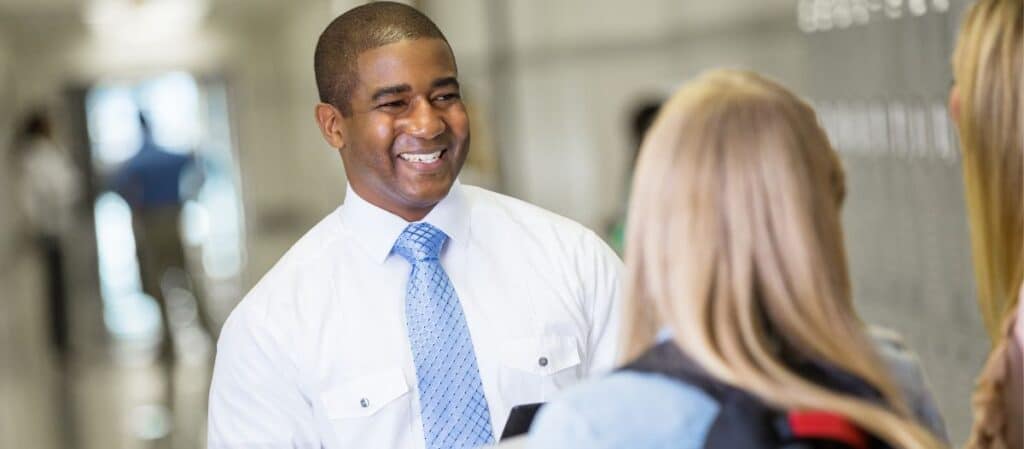The beginning of the school year is full of emotion for teachers and students alike. Some students embrace the new year with excitement and anticipation, while others cautiously enter it with questions or anxiety about what to expect. Of course, all students deserve to feel a sense of belonging, significance, and fun in their new classroom. Here are three proactive steps you can take to meet every student where they are and help all students feel welcome at the beginning of a new school year.
Create a Welcoming Classroom Environment
“I belong here.” That’s what we want students to feel when they walk into their new classroom for the first time. Before the first day of school even begins, you can welcome your students by making sure they are an intentional part of how you set up the classroom.
- Create spaces for each student at desks, tables, or cubby areas. Include their names in multiple spots around the room so students immediately see that they are part of the class community.
- Display some books and materials to spark curiosity about the new year. Strike a balance between materials students will recognize and materials that are new to them. Well-known books in the class library or math manipulatives they have used before can give students a sense of comfort and familiarity. New books and materials can inspire them to wonder what they will learn this year.
- Leave some blank space on bulletin boards and walls. If the classroom is completely decorated and full, the message to students is that the room belongs to the teacher. If there is space to add, grow, and change, the room feels like it is waiting for them. Some teachers hang “Coming Soon” or “Our Great Learning” signs on empty spaces to let students know their thinking will be a part of their room.
Create Opportunities to Share and Make Connections
“My teacher really knows who I am.” When students feel known by their teacher, they are more likely to feel both connected to their school and a sense of belonging in their classroom community. The first weeks of school are often full of the typical “getting to know you” activities, but you can connect with your students in many more ways.
- Learn something personal about each student in the first week of school. Observe your students, listen to their conversations, and let them know what you’re learning about them. Ask them their cat’s name or how old their baby sister is. When they write about going to the beach, comment on how much fun it sounds like they had. (Try out this exercise to get a sense of how well you know your students and where you can improve.)
- Share something about yourself. Tell your students about your dog, your favorite sports team, or a vacation you took over the summer. Through this information, students can make connections with you and begin to feel comfortable with you.
- Use Morning Meeting as a time to connect each day. Plan diverse sharing topics to give students the opportunity to share things about themselves. Choose activities that foster a sense of community and fun. Starting each day with Morning Meeting gives students a predictable and safe routine. Students can ease into the day while knowing what to expect, learning about their classmates, and feeling like a part of the class.
Create Excitement About the Year of Learning Ahead
“I can’t wait to learn that!” You can welcome students to the new year by giving them a glimpse into what they will learn and do this year. Instead of focusing on ways this year could be more difficult than the year before, students can shift their thinking to what could be interesting, exciting, or a fun challenge.
- Give a preview of what students will learn. Before students choose goals or hopes and dreams for the year, highlight some of the interesting units they’ll learn. Tell them about traditions that your grade has, such as a field trip, a big project, or an event.
- Share pictures, recommendations, letters, or stories from last year’s class. Students can picture themselves doing the new learning of the year when they see photos of the day last year’s class dressed up as famous Americans or of the ocean projects they created. If you had your previous class write letters of advice or book recommendations, they can hear what other kids loved about this grade.
- Plan opportunities for students to show you what they already know. New learning can be exciting but daunting for students who may not feel as confident in their academic abilities. Before diving into new skills and content, you can help students feel comfortable in academic settings by giving them tasks such as finding and reading books in the classroom library that they know well, writing about something they love, or making up their own math problems that they know how to solve.
Further Resources
It is never too early to start planning how you will welcome your students to a new school year. For more resources to support your planning, browse our archive of articles on the first weeks of schools, including:
Also, watch our free webinar series on starting the year with purpose.
For a more in-depth look at planning for the beginning of the year, elementary school educators can check out The First Six Weeks of School, while middle school teachers can take a look at Building an Academic Community.
Suzy Ghosh is a Responsive Classroom consulting teacher and a second-grade teacher in Fairfax County, Virginia.
